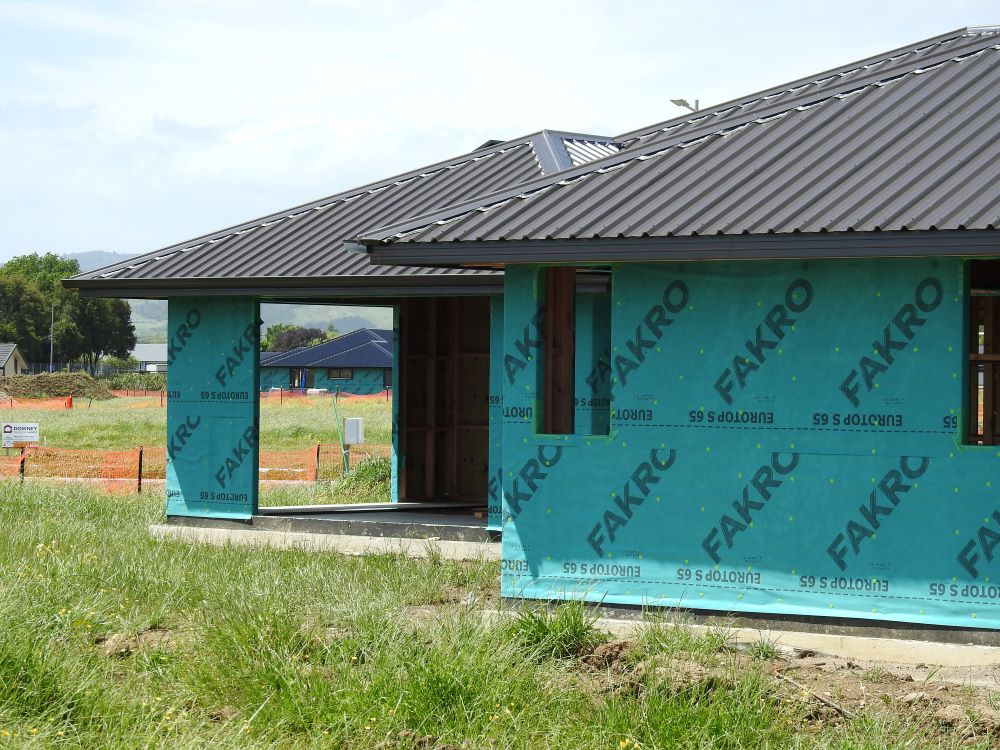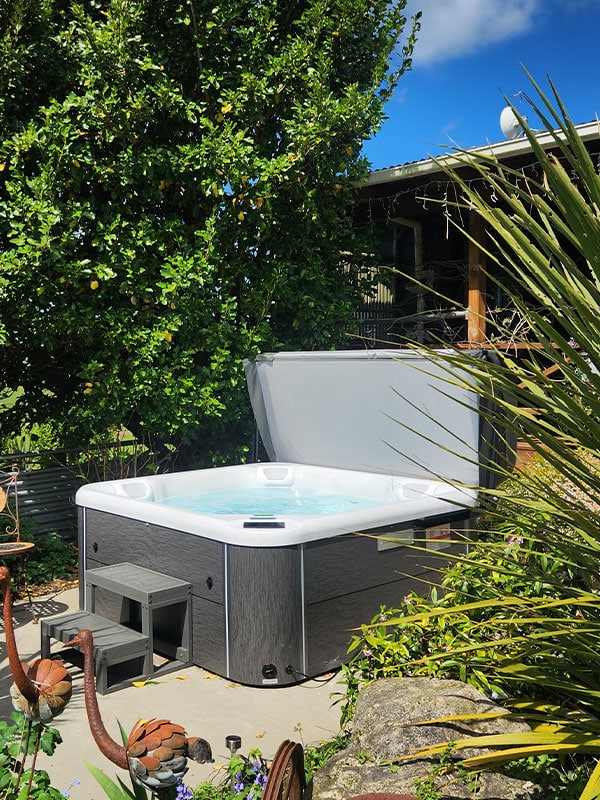New Zealand’s climate varies dramatically across regions, from the wet, windy conditions of the West Coast to the colder, drier climates found in inland areas. When selecting a building wrap, it is essential to account for the specific weather challenges of your location.
For instance, homes in coastal regions must contend with high wind pressures and salt-laden air, necessitating a wrap that offers superior weather-tightness and durability. Meanwhile, areas with heavy rainfall require wraps with excellent water resistance and moisture-shedding properties to prevent water ingress and condensation issues. Understanding your local climate is a crucial first step in choosing the right product.
Breathability and Vapour Permeability
Breathability is one of the most critical features of building wrap, particularly in residential construction. A breathable wrap allows water vapour to escape from within the building while preventing liquid water from penetrating the structure.
This is essential for controlling condensation and maintaining a dry, healthy environment. Vapour-permeable wraps are especially effective in timber-framed homes, where moisture build-up can lead to rot and structural damage.
On the other hand, non-breathable wraps may be used in specific industrial or commercial applications but are generally less suited for residential use due to their inability to manage internal moisture effectively.
Material Compatibility
Compatibility between the building wrap and the primary construction materials is another important consideration. Different materials, such as timber, steel, and concrete, have unique requirements.
For example, timber-framed homes benefit from breathable wraps that reduce the risk of moisture-related issues, while steel-framed structures may require wraps with added corrosion resistance.
Additionally, it’s important to ensure the building wrap integrates seamlessly with other insulation systems and cladding materials, creating a cohesive barrier against the elements.
UV Resistance
During construction, there may be delays in cladding installation, exposing the building wrap to direct sunlight for extended periods. In such cases, UV resistance becomes a vital factor.
Building wraps with high UV resistance can maintain their structural integrity and performance even after prolonged exposure, ensuring they continue to protect the building once cladding is applied. When evaluating UV resistance, check the manufacturer’s specifications for exposure limits.
Durability and Tear Resistance
Construction sites can be unpredictable, with windy conditions and complex architectural designs posing challenges during installation. A durable, tear-resistant building wrap is essential to remain intact throughout the process.
Tear resistance is significant in regions prone to high winds, as a compromised wrap can fail to provide adequate protection, leading to costly repairs and delays.

Cost vs. Long-Term Value
While it may be tempting to choose a budget-friendly building wrap, it’s essential to consider the long-term value of your investment. Higher-quality wraps often come with advanced features like enhanced breathability, UV resistance, and durability, contributing to long-term energy savings and reduced maintenance costs.
Investing in a premium wrap can protect your building from potential issues such as moisture damage, ultimately saving you money over time.
Compliance with Building Codes
In New Zealand, all building wraps must comply with the New Zealand Building Code and any additional local council regulations. Compliance ensures the wrap meets safety and performance standards, giving you peace of mind that your building is adequately protected. Look for wraps with certifications or endorsements from recognised industry bodies to verify their quality and suitability.
Types of Building Wraps and Their Applications
Breathable Building Wraps
Breathable building wraps are designed to allow moisture to escape while preventing water from entering the structure. These wraps are ideal for timber-framed homes, where maintaining a dry internal environment is critical. Breathable wraps are highly versatile and are among the most popular choices for residential construction in New Zealand.
Non-Breathable Building Wraps
Non-breathable wraps are less common in residential construction but may be suitable for specific industrial or commercial applications where moisture management is less of a concern. These wraps provide a robust barrier against water and air infiltration but may not be ideal for environments where condensation control is necessary.
Reflective Building Wraps
Reflective wraps offer the added benefit of thermal resistance by deflecting heat, making them an excellent choice for buildings in warmer climates. These wraps can enhance energy efficiency by reducing cooling demands, particularly in areas with high sun exposure.
Self-Adhesive Wraps
Self-adhesive wraps simplify the installation process, especially in tight or awkward spaces. They provide a strong bond to surfaces, reducing the risk of gaps or tears that could compromise the wrap’s effectiveness. These wraps are often used in specialised applications where a secure seal is essential.
Fire-Retardant Wraps
Fire-retardant wraps are critical for high-risk or multi-storey buildings. These wraps are designed to slow the spread of flames, providing an added layer of safety. When choosing a fire-retardant wrap, check for compliance with relevant fire safety standards to ensure adequate protection.
How to Evaluate Building Wrap Brands
When selecting a building wrap, it’s essential to choose a reputable brand with a proven track record. Look for reviews, case studies, and recommendations from builders to identify brands known for reliability and performance in New Zealand’s diverse conditions.
Additionally, consider the manufacturer’s warranty and customer support. A strong warranty provides peace of mind, while accessible support ensures any issues during installation can be quickly resolved. For environmentally conscious builders, eco-friendly wraps made from recycled materials are increasingly available. Look for products with environmental certifications to ensure sustainability.
Step-by-Step Guide to Selecting the Right Building Wrap
- Assess your project’s needs, considering location, climate, and building type.
- Understand the environmental challenges your building will face, such as high winds or heavy rainfall.
- Consult with professionals, such as architects or builders, who can provide tailored advice.
- Compare product features and specifications to identify the best options for your project.
- Verify compliance with the New Zealand Building Code and any local council requirements.
- Make an informed decision based on your budget and long-term goals, prioritising quality and durability.
Common Mistakes to Avoid
Avoid choosing a building wrap based solely on cost, as cheaper options may lack the durability and performance needed for long-term success. Ignoring proper installation techniques is another common mistake, as even the best wraps can fail if installed incorrectly.
Always ensure compatibility with other building materials to create a cohesive system. Finally, don’t neglect regular maintenance and inspections, as these can help identify and address potential issues early.
Choose Your Building Wrap Today
Choosing the right building wrap is a vital step in ensuring the durability, energy efficiency, and weather-tightness of your building. By understanding the key factors, exploring the available options, and consulting with professionals, you can decide to protect your investment and enhance the comfort of your home.
Remember, a high-quality building wrap is not just an expense but a long-term investment in your property’s future. For personalised advice, reach out to experienced builders or suppliers who can guide you towards the best choice for your project.




